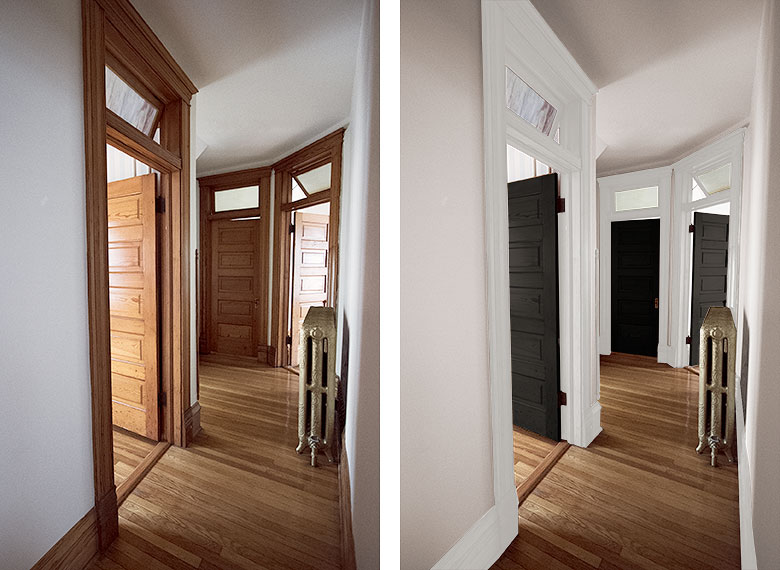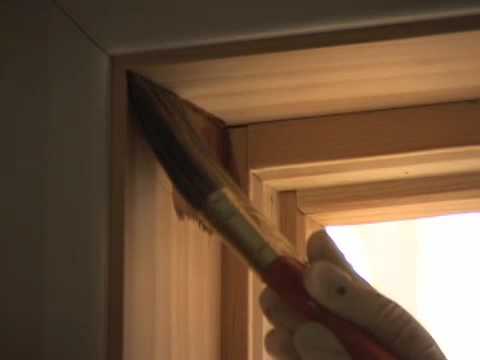If you’re wondering whether to paint woodwork first or last, you’ve come to the right place! Deciding on the order of painting can make a big difference in the outcome of your project. So, let’s dive in and explore the pros and cons of both approaches.
Painting woodwork can bring a fresh and vibrant look to any room, but figuring out the best way to go about it can be confusing. Do you start with the woodwork or save it for last? Well, there isn’t a one-size-fits-all answer, as it depends on various factors.
In this article, we’ll walk you through the considerations involved, so you can make an informed decision for your next painting project. Ready to find out whether you should paint woodwork first or last? Let’s get started!

Should You Paint Woodwork First or Last? The Ultimate Guide to Make the Right Choice
Painting woodwork can be a tricky task, especially when it comes to deciding whether to paint it first or last in your project. Many factors need to be considered, such as the type of wood, the condition of the woodwork, and the overall workflow of the project. In this comprehensive guide, we will delve into the pros and cons of both approaches and provide you with the necessary insights to help you make the best decision for your specific circumstances.
Factors to Consider Before Painting Woodwork
Before diving into the discussion of when to paint woodwork, let’s take a look at the key factors that should influence your decision-making process:
The State of Your Woodwork
The condition of your woodwork is an essential factor to consider when deciding whether to paint it first or last. If the woodwork is damaged or has imperfections, it might require repairs, sanding, or filling in before being painted. In such cases, it is generally recommended to complete these pre-painting tasks before moving on to the rest of the project.
On the other hand, if your woodwork is in good condition and only requires a fresh coat of paint, you may choose to paint it last. This approach can help protect the wood from any accidental damage that may occur during the painting of other surfaces.
In summary, assess the condition of your woodwork and determine if any repairs or preparations are needed before deciding whether to paint it first or last.
Key Takeaways: Should You Paint Woodwork First or Last?
- 1. It is generally recommended to paint woodwork last, after painting the walls and ceilings.
- 2. Painting woodwork last allows for easier masking and avoids accidental paint splatters on freshly painted surfaces.
- 3. By painting woodwork last, you can ensure a smooth and seamless finish, blending it with the surrounding surfaces.
- 4. Prioritize proper surface preparation, such as sanding and priming, before painting the woodwork to achieve better results.
- 5. Remember to use high-quality paint and appropriate brushes or rollers for a professional-looking paint job on woodwork.
This means that it is generally recommended to paint woodwork last. By following this approach, you can avoid potential paint mishaps and achieve a smooth and seamless finish. However, don’t forget to properly prepare the woodwork and use high-quality materials for the best results!
Frequently Asked Questions
When it comes to painting woodwork, there’s often confusion about whether to tackle it first or leave it for last. Here are some common questions regarding this topic and their answers to help you make an informed decision.
1. What are the advantages of painting woodwork first?
Painting woodwork first can offer several advantages. Firstly, it allows you to focus on intricate details without worrying about accidentally getting paint on the walls or other surfaces. By addressing the woodwork first, you can achieve clean lines and ensure a polished finish. Additionally, beginning with the woodwork lets you identify any flaws or imperfections that need to be addressed before moving on to the larger surfaces.
Furthermore, painting the woodwork first allows you to work more efficiently. You can use tape or protective covers to shield the woodwork while painting the walls, reducing the risk of accidental brush strokes or splatters on the wood. This method also allows you to prioritize the finishing touches and achieve a professional look.
2. What are the benefits of painting woodwork last?
If you choose to paint the woodwork last, there are a few advantages to consider. One primary benefit is that it gives you the chance to make any necessary touch-ups to the walls or other surfaces before focusing on the woodwork. This can be particularly useful if you’ve used darker colors on the walls or if the woodwork is intricate and requires more time and attention.
Moreover, painting the woodwork last allows you to protect it better while working on the larger surfaces. By covering the woodwork with tape or drop cloths, you can prevent accidental paint drips or smudges, keeping your woodwork clean and pristine. It also gives you the opportunity to take your time with the woodwork, ensuring that it receives the attention to detail it deserves.
3. Can you paint the woodwork before the walls have dried completely?
It is generally not recommended to paint the woodwork before the walls have dried completely. If the walls are still wet, there’s a chance that the paintbrush or roller may pick up some of the wall color and transfer it onto the woodwork. This can result in an uneven or discolored finish on your woodwork.
A good rule of thumb is to wait until the walls are completely dry before beginning to paint the woodwork. This ensures that you achieve a clean, uniform appearance on both the walls and the woodwork. Patience is key here, as rushing the process can lead to subpar results.
4. Should I use the same paint for the walls and the woodwork?
While it’s possible to use the same paint for both the walls and the woodwork, it’s not always recommended. Different surfaces may require different types of paint to achieve the desired results. For example, woodwork often benefits from a specialized wood paint or primer, while walls may require a different finish or texture.
Consulting with a paint professional or reading the instructions on the paint cans can help you determine the best type of paint for each surface. Using the appropriate paint for the specific surfaces ensures better adherence, durability, and overall appearance.
5. Can I hire a professional painter to handle the woodwork?
Absolutely! If you’re unsure about painting the woodwork yourself or want to ensure a flawless finish, hiring a professional painter is a great idea. Skilled painters have the expertise and tools needed to handle woodwork with precision and care. They will also be knowledgeable about the best paint types and techniques to use on different surfaces.
By hiring a professional, you can save time and potentially avoid costly mistakes. They can provide valuable advice on color choices, surface preparation, and the order in which to tackle your painting project. With their expertise, you can achieve beautiful, long-lasting results on your woodwork.

Summary
Painting woodwork can be done before or after other tasks, but it’s best to consider a few things. If you don’t mind touch-ups, painting last can save time. However, if you want a neat finish, painting woodwork first is the way to go.
Remember to prep the woodwork and protect it from spills or drips. Work in a well-ventilated area, and take your time to achieve the best results. Whichever order you choose, make sure to enjoy the process and have fun with your painting project!
